Temporomandibular Disorders
How to submit an article:
- Registered users can submit any published journal article that has a unique DOI (Digital Object Identifier) name or link to Research Hub.
- For example, you can paste the full DOI link:
https://doi.org/10.1109/5.771073or just the DOI name:10.1109/5.771073into the field above and click submit. - The person who is first to submit a valid article to Research Hub will forever be credited for it, and every article submission earns you +6 Research Points.
Also known as: Temporomandibular Joint Dysfunction, TMD, TMJD
Related Topics
Published research studies are articles that present the findings of original research that has undergone a peer-review process and has been made publicly available in scholarly journals, books or other media.
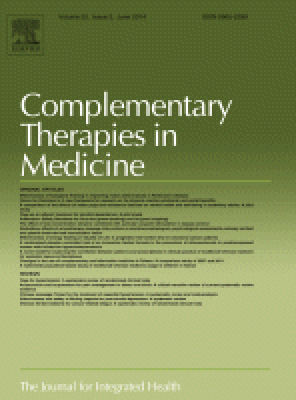
Auricular acupuncture in TMD — A sham-controlled, randomized, clinical trial
2022 Aug Complementary Therapies in Medicine Aroca JP, Cardoso PMF, Favarão J, Zanini MM, Camilotti V, Busato MCA, et al.
Randomised Controlled Trial Ear Acupuncture Temporomandibular DisordersAuricular acupuncture was found to improve physical and emotional aspects in patients with temporomandibular disorders, with similar results to occlusal splint treatment.

Acupuncture in the treatment of temporomandibular disorders, facial pain, and postural neuromuscular disorders. Presentation of a clinical case
2021 Jan Revista Internacional de Acupuntura Bilello G, Currò G
It is concluded that acupuncture is an alternative method to conventional stomatognathic treatment for individuals with craniomandibular disorders of muscular origin.
Case Report Temporomandibular Disorders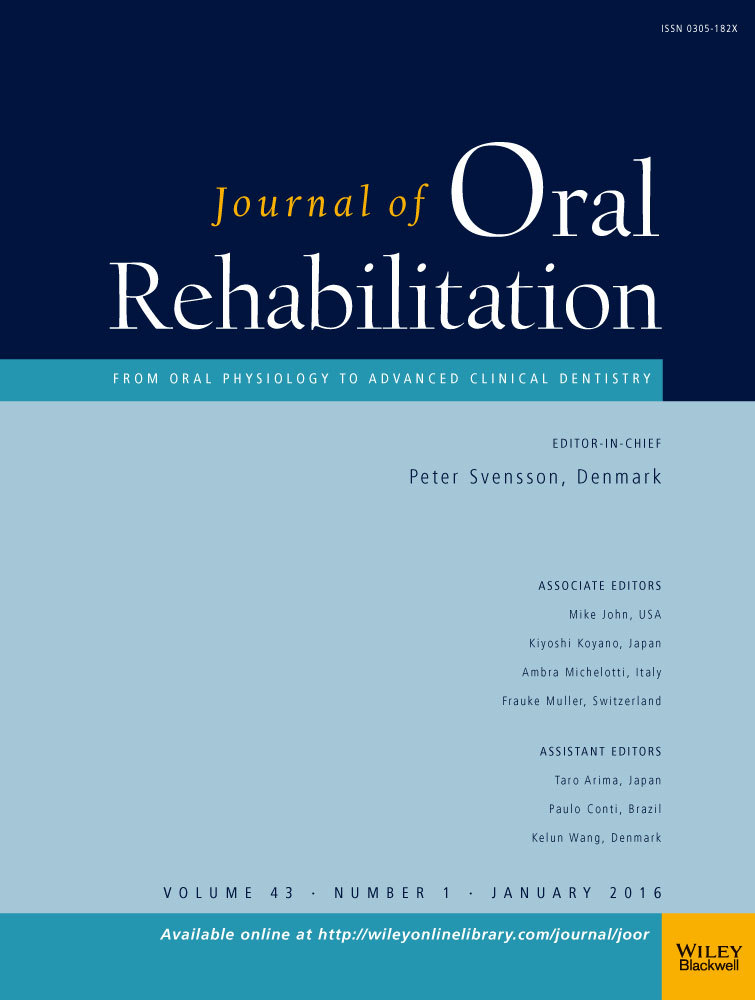
Comparison of acupuncture on specific and non‐specific points for the treatment of painful temporomandibular disorders: A randomised controlled trial
2020 Mar 09 Journal of Oral Rehabilitation Şen S, Orhan G, Sertel S, Schmitter M, Schindler HJ, Lux CJ, et al.
Randomised Controlled Trial AcupunctureAcupuncture, regardless of whether on specific or non-specific points, substantially decreases non-chronic pain in patients suffering from Temporomandibular Disorders.
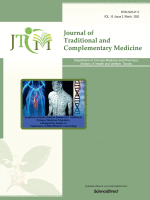
Acupuncture (針灸 Zhēn Jiǔ) – An Emerging Adjunct in Routine Oral Care
2017 Dec Journal of Traditional and Complementary Medicine Gupta, D., Dalai, D., Swapnadeep, Mehta, et al.
Systematic Review Facial Conditions Temporomandibular DisordersIn oral care, acupuncture can be a supplement to conventional treatments in temporomandibular disorders, facial pain, pain management, Sjoegrens syndrome, and in phobias and anxiety.

Acupuncture therapy in the management of the clinical outcomes for temporomandibular disorders
2017 Mar Medicine Wu, Jun-Yi MD; Zhang, Chao MD; Xu, Yang-Peng MM; Yu, Ya-Yu MD; Peng, Le PhD; Leng, et al.
Systematic Review Meta-Analysis Temporomandibular Disorders Facial ConditionsAcupuncture therapy is effective in reducing the degree of pain in patients with temporomandibular disorders, especially those with myofascial pain symptoms.
Research insights are moderated by the Research Hub team and offer an at-a-glance overview of interesting research findings.

2022 Complementary Therapies in Medicine
Auricular acupuncture was found to improve physical and emotional aspects in patients with temporomandibular disorders, with similar results to occlusal splint treatment.
Randomised Controlled Trial Ear Acupuncture
Auricular acupuncture in TMD — A sham-controlled, randomized, clinical trial
Aroca JP, Cardoso PMF, Favarão J, Zanini MM, Camilotti V, Busato MCA, et al.

2020 Journal of Oral Rehabilitation
Acupuncture, regardless of whether on specific or non-specific points, substantially decreases non-chronic pain in patients suffering from Temporomandibular Disorders.
Randomised Controlled Trial Acupuncture
Comparison of acupuncture on specific and non‐specific points for the treatment of painful temporomandibular disorders: A randomised controlled trial
Şen S, Orhan G, Sertel S, Schmitter M, Schindler HJ, Lux CJ, et al.

2017 Journal of Traditional and Complementary Medicine
In oral care, acupuncture can be a supplement to conventional treatments in temporomandibular disorders, facial pain, pain management, Sjoegrens syndrome, and in phobias and anxiety.
Systematic Review Facial Conditions
Acupuncture (針灸 Zhēn Jiǔ) – An Emerging Adjunct in Routine Oral Care
Gupta, D., Dalai, D., Swapnadeep, Mehta, et al.

2017 Medicine
Acupuncture therapy is effective in reducing the degree of pain in patients with temporomandibular disorders, especially those with myofascial pain symptoms.
Systematic Review Facial Conditions
Acupuncture therapy in the management of the clinical outcomes for temporomandibular disorders
Wu, Jun-Yi MD; Zhang, Chao MD; Xu, Yang-Peng MM; Yu, Ya-Yu MD; Peng, Le PhD; Leng, et al.
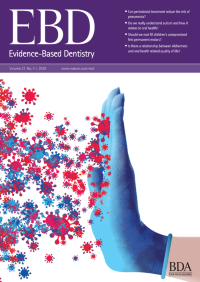
2010 Evidence-Based Dentistry
There is limited evidence that acupuncture is more effective than sham acupuncture in alleviating pain and masseter muscle tenderness in temporomandibular disorders.
Review Article
Limited evidence that acupuncture is effective for treating temporomandibular disorders
Jens C Türp
Review Articles
Review articles summarise and critically evaluate the current state of research on a specific topic or field by synthesising multiple primary research studies.

Acupuncture (針灸 Zhēn Jiǔ) – An Emerging Adjunct in Routine Oral Care
2017 Dec Journal of Traditional and Complementary Medicine Gupta, D., Dalai, D., Swapnadeep, Mehta, et al.
Systematic Review Facial Conditions Temporomandibular DisordersIn oral care, acupuncture can be a supplement to conventional treatments in temporomandibular disorders, facial pain, pain management, Sjoegrens syndrome, and in phobias and anxiety.

Acupuncture therapy in the management of the clinical outcomes for temporomandibular disorders
2017 Mar Medicine Wu, Jun-Yi MD; Zhang, Chao MD; Xu, Yang-Peng MM; Yu, Ya-Yu MD; Peng, Le PhD; Leng, et al.
Systematic Review Meta-Analysis Temporomandibular Disorders Facial ConditionsAcupuncture therapy is effective in reducing the degree of pain in patients with temporomandibular disorders, especially those with myofascial pain symptoms.

Limited evidence that acupuncture is effective for treating temporomandibular disorders
2010 Oct 7 Evidence-Based Dentistry Jens C Türp
Review Article Temporomandibular DisordersThere is limited evidence that acupuncture is more effective than sham acupuncture in alleviating pain and masseter muscle tenderness in temporomandibular disorders.
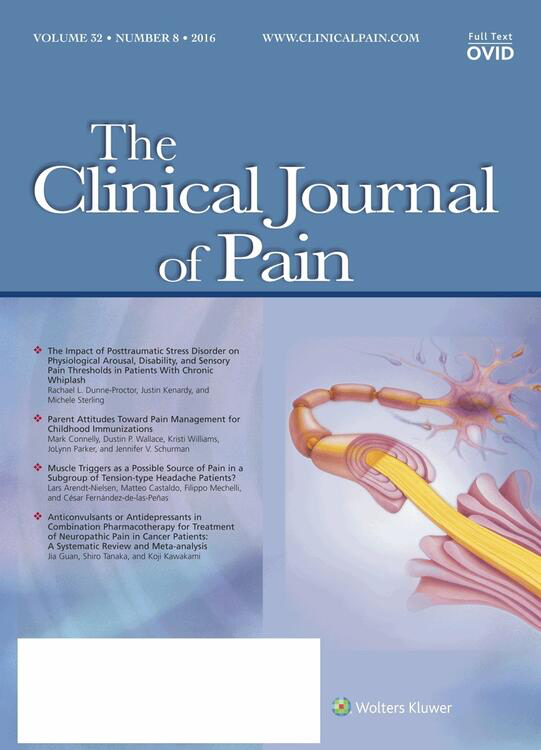
Acupuncture in the treatment of pain in temporomandibular disorders: a systematic review and meta-analysis of randomized controlled trials
2010 Jul The Clinical Journal of Pain La Touche R, Goddard G, De-la-Hoz JL, Wang K, Paris-Alemany A, Angulo-Díaz-Parreño S, et al.
Systematic Review Meta-Analysis Temporomandibular DisordersAcupuncture is a reasonable adjunctive treatment for producing a short-term analgesic effect in patients with painful temporomandibular disorder symptoms.
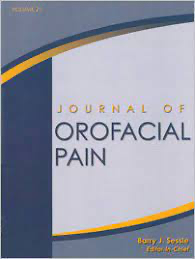
Acupuncture for temporomandibular disorders: a systematic review
2010 Mar Journal of Orofacial Pain Cho SH, Whang WW
This systematic review noted moderate evidence that acupuncture is an effective intervention to reduce symptoms associated with TMD.
Systematic Review Temporomandibular Disorders Facial ConditionsClinical Trials
Clinical trials are research studies that involve people and are conducted to evaluate the safety and efficacy of new treatments or interventions, such as drugs, medical devices, or behavioural therapies.

Auricular acupuncture in TMD — A sham-controlled, randomized, clinical trial
2022 Aug Complementary Therapies in Medicine Aroca JP, Cardoso PMF, Favarão J, Zanini MM, Camilotti V, Busato MCA, et al.
Randomised Controlled Trial Ear Acupuncture Temporomandibular DisordersAuricular acupuncture was found to improve physical and emotional aspects in patients with temporomandibular disorders, with similar results to occlusal splint treatment.

Comparison of acupuncture on specific and non‐specific points for the treatment of painful temporomandibular disorders: A randomised controlled trial
2020 Mar 09 Journal of Oral Rehabilitation Şen S, Orhan G, Sertel S, Schmitter M, Schindler HJ, Lux CJ, et al.
Randomised Controlled Trial AcupunctureAcupuncture, regardless of whether on specific or non-specific points, substantially decreases non-chronic pain in patients suffering from Temporomandibular Disorders.

Could Acupuncture Be Useful in the Treatment of Temporomandibular Dysfunction?
2014 Dec Journal of Acupuncture and Meridian Studies Grillo CM, Canales Gde L, Wada RS, Alves MC, Barbosa CM, Berzin F, et al.
Acupuncture reduced the intensity of TMD pain and promoted the benefits of mandibular movement. When the treatments were compared, both reduced pain intensity and increased mouth opening equally, and may be considered strategies for control of chronic pain related to TMD.
Randomised Controlled Trial Temporomandibular DisordersStudy Protocols
Published study protocols are detailed plans that outline the objectives, methodology, statistical analyses, and organisation of a research study that have been made publicly available for others to review and use as a reference.
Presentation Slides

Randomised Controlled Trial
Auricular acupuncture was found to improve physical and emotional aspects in patients with temporomandibular disorders, with similar results to occlusal splint treatment.
Aroca JP, Cardoso PMF, Favarão J, Zanini MM, Camilotti V, Busato MCA, Mendonça MJ, Alanis LRA

Randomised Controlled Trial
Acupuncture, regardless of whether on specific or non-specific points, substantially decreases non-chronic pain in patients suffering from Temporomandibular Disorders.
Şen S, Orhan G, Sertel S, Schmitter M, Schindler HJ, Lux CJ, Giannakopoulos NN

Systematic Review
In oral care, acupuncture can be a supplement to conventional treatments in temporomandibular disorders, facial pain, pain management, Sjoegrens syndrome, and in phobias and anxiety.
Gupta, D., Dalai, D., Swapnadeep, Mehta, P.D., Indra, B., Rastogi, S., Jain, A., Chaturvedi, M., Sharma, S., Singh, S., Gill, S., Singh, N., & Gupta, R. (2014). Acupuncture (針灸 Zhēn Jiǔ) – An Emerging Adjunct in Routine Oral Care. Journal of Tradi

Systematic Review
Acupuncture therapy is effective in reducing the degree of pain in patients with temporomandibular disorders, especially those with myofascial pain symptoms.
Wu, Jun-Yi MD; Zhang, Chao MD; Xu, Yang-Peng MM; Yu, Ya-Yu MD; Peng, Le PhD; Leng, Wei-Dong PhD; Niu, Yu-Ming PhD; Deng, Mo-Hong PhD

Review Article
There is limited evidence that acupuncture is more effective than sham acupuncture in alleviating pain and masseter muscle tenderness in temporomandibular disorders.
Jens C Türp

Systematic Review
Acupuncture is a reasonable adjunctive treatment for producing a short-term analgesic effect in patients with painful temporomandibular disorder symptoms.
La Touche R, Goddard G, De-la-Hoz JL, Wang K, Paris-Alemany A, Angulo-Díaz-Parreño S, Mesa J, Hernández M
Executive Summary
Write an executive summary in the form of a blog article on the topic of "Research into Chinese medicine treatment for Temporomandibular Disorders" summarising the research below and using language that can be easily understood by patients and avoiding medical jargon using a professional and caring tone of voice.
Write an executive summary in the form of a blog article on the topic of "Researched Chinese medicine treatments for Temporomandibular Disorders" summarising the research below in an objective and easy to understand way, and using language that can be easily understood by patients. Group the article into Chinese medicine treatments first, followed by nutrition and other treatments. Avoid using medical jargon and use a professional and caring tone of voice.
Write me a concise but easy to understand executive summary on the topic of "Chinese medicine treatments for Temporomandibular Disorders" based on the following research that I will give you. Your summary should be 2 paragraphs long in Australian English spelling and include references to the studies.
A Randomised Controlled Trial published in 2022 in the journal Complementary Therapies in Medicine found that Auricular acupuncture was found to improve physical and emotional aspects in patients with temporomandibular disorders, with similar results to occlusal splint treatment. In the study, patients suffering from temporomandibular disorders were allocated into three groups - those who received auricular acupuncture (AA), those treated with occlusal splints (OS), and a sham group. The patients were evaluated and monitored over an eight-week period using axes I and II of the RDC-TMD according to CONSORT guidelines. The findings revealed significant improvements in both the emotional aspects and physical aspects amidst the auricular acupuncture group and occlusal splint group. The sham group showed no improvements in the emotional aspect and only a few in the physical aspect. The comparison between the auricular acupuncture group and the occlusal splint group revealed similar number of variables with improved outcomes, indicating that the auricular acupuncture treatment was as effective as the occlusal splint treatment. On the other hand, the sham group presented a significant difference when compared to the other groups. These results strongly suggest the potential of auricular acupuncture as a treatment option for temporomandibular disorders.
A Randomised Controlled Trial published in 2020 in the journal Journal of Oral Rehabilitation found that Acupuncture, regardless of whether on specific or non-specific points, substantially decreases non-chronic pain in patients suffering from Temporomandibular Disorders. In this double-blinded, single-centre, randomized controlled trial, 49 patients with non-chronic painful Temporomandibular Disorders were divided into two groups. Group A received acupuncture on specific points, while Group B had acupuncture on non-specific points. Subjects were examined, treated weekly with acupuncture for a month by a dentist, and reexamined five weeks after the initial examination by an examiner unaware of the study groups. The main criteria for assessment was characteristic pain intensity, with other factors considered including mouth opening ability, patients' expectations regarding treatment, mood, and oral health-related quality of life. The results indicated that neither age nor characteristic pain intensity significantly differed between the two groups. However, characteristic pain intensity was notably lower five weeks post initial examination for both groups. A perceived increase in mouth-opening capacity, enhanced oral health-related quality of life, and a substantial reduction in mood disorder symptoms were encountered, with all patients holding positive views towards acupuncture therapy. The findings determined that the reduction of non-chronic pain from Temporomandibular Disorders through acupuncture cannot be credited to the selection of specific points alone.
A Systematic Review published in 2017 in the journal Journal of Traditional and Complementary Medicine found that In oral care, acupuncture can be a supplement to conventional treatments in temporomandibular disorders, facial pain, pain management, Sjoegrens syndrome, and in phobias and anxiety. Acupuncture aims to treat a range of medical and dental ailments, though is most commonly used for pain relief. This article reviews about the various possible roles of acupuncture in clinical dental practice. Acupuncture has potential in supplementing conventional treatment procedures by its diverse applicability outreach. Role of acupuncture in dental practice has been well supported by clinical trials. Its role in alleviating facial pain, pre-operative and post-operative dental pain has led to its widespread application.
A Systematic Review published in 2017 in the journal Medicine found that Acupuncture therapy is effective in reducing the degree of pain in patients with temporomandibular disorders, especially those with myofascial pain symptoms. This study compared the clinical effectiveness of acupuncture therapy in TMD patients through the meta-analysis of published results. Our results indicate that acupuncture therapy penetrating the skin has greater effectiveness and reduces the pain degree to a greater extent, especially myofascial pain symptoms, compared with both sham nonpenetrating acupuncture and sham laser therapy.
A Review Article published in 2010 in the journal Evidence-Based Dentistry found that There is limited evidence that acupuncture is more effective than sham acupuncture in alleviating pain and masseter muscle tenderness in temporomandibular disorders. Seven RCTs (including 141 patients) met our inclusion criteria. Six studies comparatively tested needle acupuncture against penetrating sham acupuncture, non-penetrating sham acupuncture or sham laser acupuncture, whilst the remaining study tested laser acupuncture against sham laser acupuncture. Five studies were considered to be at low risk of bias. Outcomes were reported for pain intensity, facial pain, muscle tenderness and mouth opening.
A Systematic Review published in 2010 in the journal The Clinical Journal of Pain found that Acupuncture is a reasonable adjunctive treatment for producing a short-term analgesic effect in patients with painful temporomandibular disorder symptoms. The results of this meta-analysis suggest that acupuncture is a reasonable adjunctive treatment for producing a short-term analgesic effect in patients with painful TMD symptoms. Although the results described are positive, the relevance of these results was limited by the fact that substantial bias was present. These findings must be confirmed by future RCTs that improve the methodologic deficiencies of the studies evaluated in this meta-analysis.
Moderation Tools
Topic
Sign In
Users not signed in are limited to viewing the 5 most recent items of content.